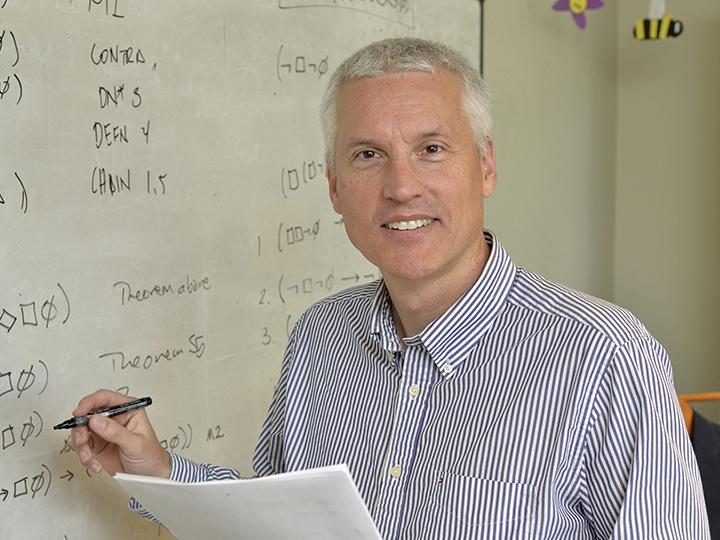Supported with logic -- Open SUNY Textbooks, which seeks to contain the costs of coursework materials by supporting their free and open availability, has published "A Concise Introduction to Logic" by SUNY Oswego's Craig DeLancey, professor and chair of philosophy.
Philosophy professor and chair Craig DeLancey recently made a contribution to the State University system's freely accessible Open Educational Resources, publishing "A Concise Introduction to Logic" as an Open SUNY Textbook.
"I saw a general announcement from Open SUNY Textbooks, an open call for authors," DeLancey said. "I thought, 'That's an interesting project.'"
More than two years later, DeLancey's book introducing students to logic is available to anyone to read and, under a Creative Commons license, to any educator to use, share and adapt -- with appropriate credit to DeLancey -- at https://textbooks.opensuny.org/concise-introduction-to-logic.
DeLancey said he had copious notes from the courses on logic he has taught often in his 15 years at SUNY Oswego. As he was writing and revising the textbook, he tested it in the classroom, and some other educators around the country began using it.
"Logic is the foundation of all reasoning," he said. "In philosophy, we use it as a primary tool. The fundamental skill students gain is to tell a good argument from a bad argument. It's an important skill to have."
Applications of logic abound throughout the disciplines, from mathematics to computer science.
"Though the book is formal and uses symbolic logic, it tries to use examples from the history of philosophy and the philosophy of science to illustrate logical skills," DeLancey said.
Aristotle, Plato, Socrates, Galileo, Thomas Hobbes, David Hume and even Ignaz Semmelweis -- an obstetrician who was the first physician to reason that washing hands with sterilizing cleansers could save lives -- all make an appearance in "A Concise Introduction to Logic."
"Whatever the discipline, the arguments all have to answer to logic," DeLancey said. "I think that's its great power and importance as a skill. It teaches you to be very clear and rigorous in your expression. It helps students to think. It seems to be a skill that, once learned, stays with you a long time."
Additionally important, in the case of DeLancey's "Logic," the textbook is free, a result of SUNY's efforts to contain the cost of higher education, including a commitment to supporting the development of low-cost learning materials for students.
"When we were piloting it, students appreciated the free textbook. That's clearly a benefit," DeLancey said. "It's also open-ended (publishing). We can go in and fix and revise it and keep improving these tools."
SUNY Oswego faculty collaborated with others to produce an earlier Open SUNY Textbook. Last year, Kristen Munger, associate dean of the School of Education, edited and co-authored, "Steps for Success: Crossing the Bridge Between Literacy Research and Practice," with SUNY Oswego curriculum and instruction faculty members Maria Murray and Joanne O’Toole and former member Elizabeth Stevens, now at Roberts Wesleyan College, among others.




